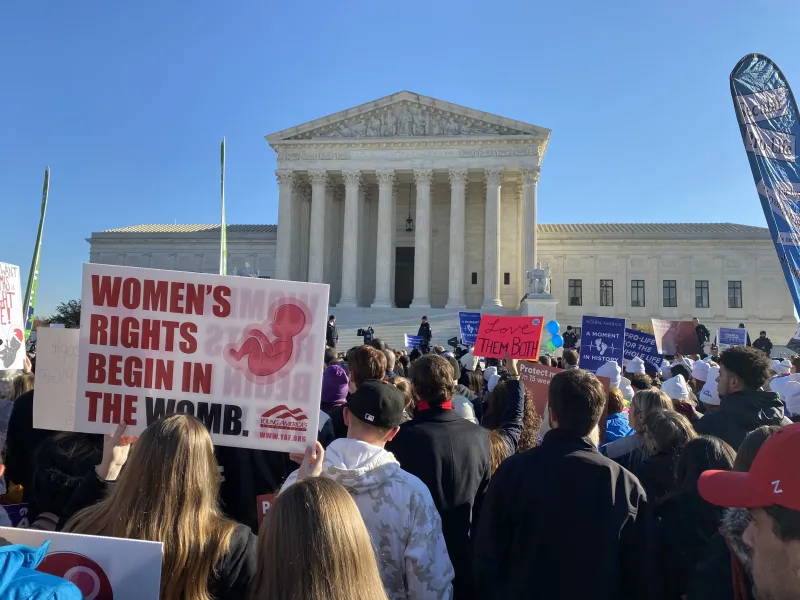
Denver Newsroom, May 3, 2022 / 16:10 pm (CNA).
Pro-life advocates have condemned the leak of a draft opinion in a U.S. Supreme Court case that would overturn Roe v. Wade, while also looking forward to such a decision being made.
“I hope it is true. I hope the majority of the court did decide to overturn Roe v. Wade. I also thought that it was a tragedy that there was a leak of the draft decision. A leak is not good for the Supreme Court. It was irresponsible and an ethical violation to make such a leak. It compromises the integrity of the court,” Archbishop Joseph Naumann of Kansas City in Kansas told CNA May 3.
Similarly, Dr. Melissa Moschella, an associate professor of philosophy at the Catholic University of America, commented that the leak “was very unethical conduct on the part of some individual at the court,” while adding, “I wasn’t surprised at all about the decision itself. It seemed very clear on the merits that this is the right decision, constitutionally.”
The news organization Politico published May 2 a draft ruling written by Justice Samuel Alito in the case Dobbs v. Jackson Women’s Health Organization. The document calls for the overturning of Roe v. Wade.
A statement from the court the following day said that “Although the document described in yesterday’s reports is authentic, it does not represent a decision by the Court or the final position of any member on the issues in the case.”
Archbishop Naumann said, “I encourage the Court to issue their actual decision as quickly as possible. It appears that leaking the draft decision was an attempt to pressure the court … Leaking a draft decision while the Court is still deliberating is a serious violation of the integrity of the Court and attempts to politicize the work of the Court.”
He added that “I am ecstatic if the Supreme Court has finally acknowledged that there really is no constitutional right to abortion. The Supreme Court, in 1973, made a tremendous error in claiming that there was a right to abortion. The court today is recognizing and acknowledging that the constitution does not address abortion. A right to abortion was not in the minds of those who authored the constitution.”
Moschella observed that “If the court is concerned at all with maintaining its legitimacy and making clear that it is not supposed to be a political actor but is simply supposed to be interpreting and applying the constitution, they should just ignore [the leak] and continue on their course.”
“Caving into political pressure and changing the decision in the face of political pressure after this leak will really delegitimize the court,” she added.
The draft ruling, Moschella said, would return abortion regulation “to democratic processes and probably will help to overcome some of the polarization that has resulted from removing it from democratic deliberation and the ability to make democratic compromises.”
“The pro life movement now needs to focus its attention on lobbying at the state level to get better laws that respect the dignity of the unborn in each state. And also to make sure that states are at the same time enacting legislation that supports women in crisis pregnancies and ensures that they have the resources that they need to have a healthy pregnancy and receive care and support.”
If you value the news and views Catholic World Report provides, please consider donating to support our efforts. Your contribution will help us continue to make CWR available to all readers worldwide for free, without a subscription. Thank you for your generosity!
Click here for more information on donating to CWR. Click here to sign up for our newsletter.




The source of the leak?
Cui Bono?